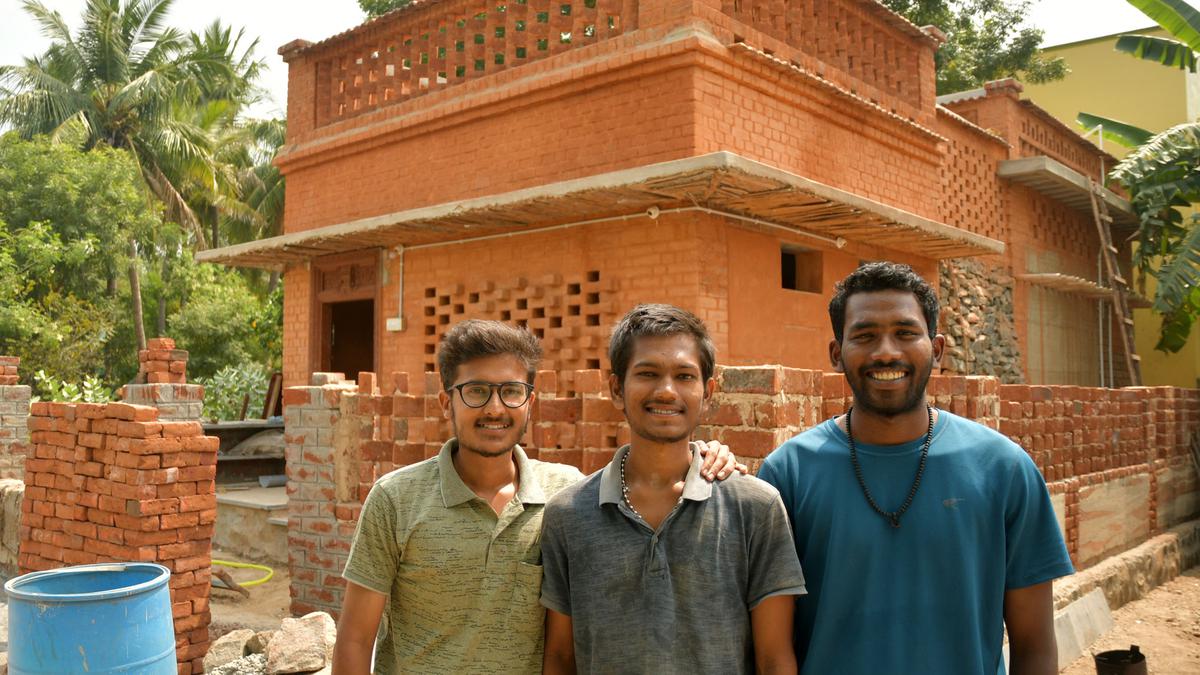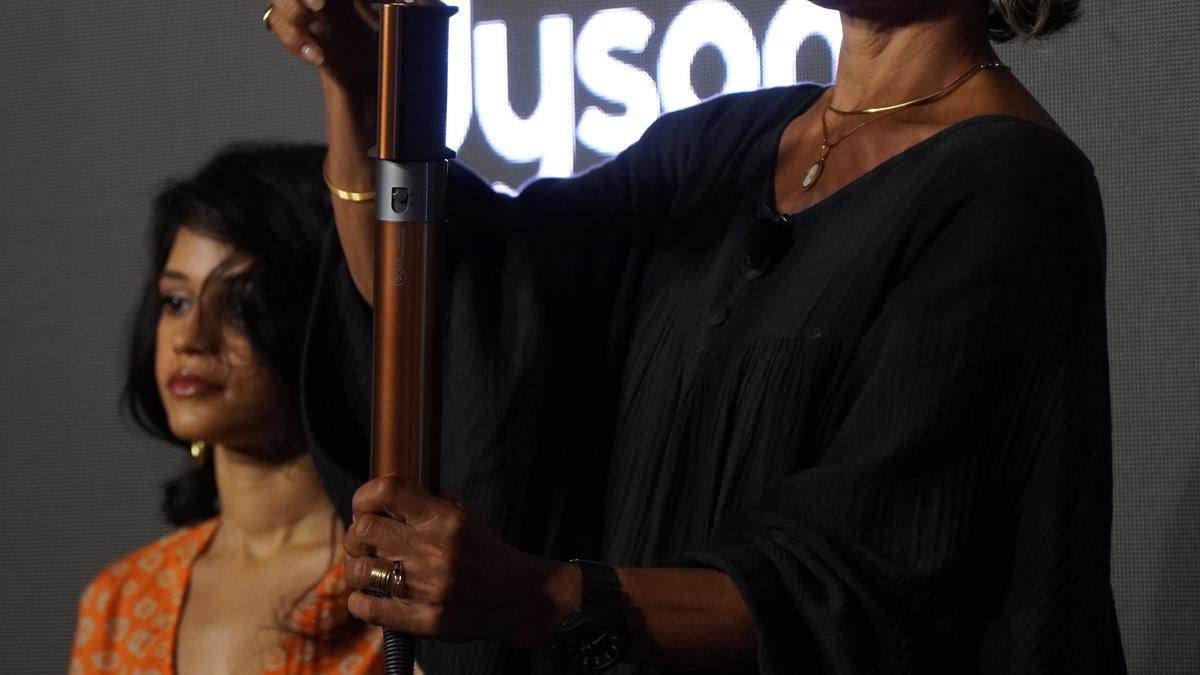Architects B Praveen, K C Akash Babu and D V Iniyan, who have been working, alongwith their friend A. Harikrishnan, on a cost-effective house project using locally available materials and labour in Thalakudi village, Lalgudi at Tiruchi district since 2022.
| Photo Credit: M MOORTHY
In a bylane of Thalakudi village, Lalgudi block, four friends have been giving shape to an experimental project, literally brick by brick since 2022.
Young architects B Praveen, KC Akash Babu, A Harikrishnan and DV Iniyan have spent the better part of the past two years building a 750 sq.ft house on a 1,550 sq ft plot, appointed with features that are unusual, yet traditional.
Students try out building techniques on site at the Thalakudi house.
| Photo Credit:
SPECIAL ARRANGEMENT
Praveen, Akash and Harikrishnan are graduates of Architecture from National Institute of Technology – Tiruchi (NIT-T), and were inspired to experiment with cost-effective construction after studying about it in class. “Harikrishnan and I met Iniyan in Bengaluru, and when Praveen decided to take up this project in Thalakudi, we decided to quit our jobs and join him,” says Akash.
Though both Akash and Harikrishnan have moved on to other projects recently, their ‘first-born’ naturally remains their favourite, say the friends.
Unusual features
The red-brick house stands out from the rest in the small street bounded by fields.
Its most impressive feature is the gently curving Mexican dome in the drawing hall, that makes the ceiling resemble a well-baked loaf of bread.
“The Mexican dome is an age-old technique that has been popularised in India by Bengaluru-based architect Varun Thautam. We attended workshops at Mr. Thautam’s practice, and worked there for about a year, learning different methods before coming to Thalakudi,” says Praveen.
Since it does not contain concrete or steel, the dome is formed manually by aligning the bricks, and can cover any type of surface. In the Thalakudi project, though the dome looks curved below, on the top, it is flat, to facilitate future construction.
Mexican dome ceiling at the Thalakudi house.
| Photo Credit:
SPECIAL ARRANGEMENT
“The one-brick width and shape decreases the heat entering the building. We noticed this even as we built it last year in the summer months. The difference in external and internal temperature in the drawing room is significant, almost like a micro-climate,” says Praveen.
The use of concrete has been restricted to provide structural support. Due to the clayey soil here, the foundation has been given a depth of five feet and width of three feet. The plinth of the house has been raised 2.5 feet above the road.
To learn the ropes as they went along, the friends did most of the building and masonry work by themselves, once a contractor laid the traditional stone foundation. “To speed up things, we have now decided to employ a mason and two women helpers. We also help with the construction, because we get to learn from their building methods,” says Akash.
The walls have a novel twist too, as they combine brickwork with rammed earth fillers. “The two ends of the walls are made of bricks; the mid-section is composed of rammed earth. This is a technique where a semi-dry earth mixture is tamped down between wooden shutters to create a wall panel. In our case, since we have very wet soil, we stabilised our mixture with cement and lime. It is a kind of manmade sedimentary rock,” says Praveen.
Something old, something new
Rustic yet contemporary doorways at the Thalakudi house.
| Photo Credit:
SPECIAL ARRANGEMENT
The doors for the house have been refashioned from large wooden chests that were once used to store rice. “These chests are solid and have some decorative elements that make it easy for them to be customised into doors,” says Akash.
With a drawing hall, kitchen and bedroom downstairs, and a suite above, the house radiates warmth and quiet comfort. Though it looks rustic, it is equipped with all the other standards of a modern dwelling, such as Wi-Fi, electricity and rainwater harvesting.
The free thinkers have taken care to incorporate old and new elements to the house, at a cost of approximately ₹20 lakh so far. With the project due to end soon, the friends know that they have been lucky to have escaped the pressures of a deadline- or budget-bound assignment. Along the way, they have also held workshops for students to pass on their real-time learning.
“This project has so much life in it. It has united people and drawn new visitors just to see the place,” says Iniyan.







